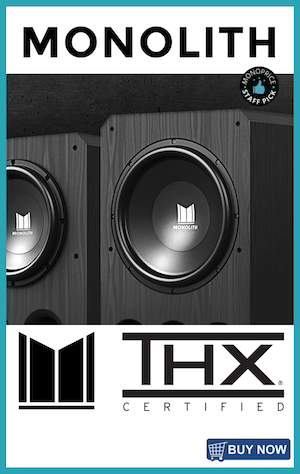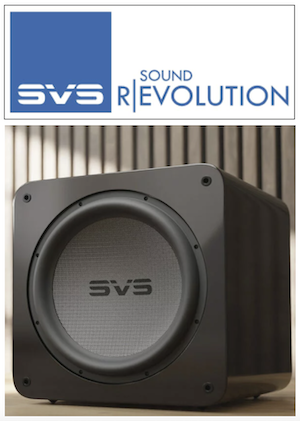- Manufacturer & Model
- Audioengine A2+ Wireless Speaker System
- MSRP
- $269
- Highlights
- Affordable price point, compact, attractive cabinet finish, simple to integrate and operate, great overall sound.
- Summary
- The A2+ is Audioegine's latest A2 model, adding aptX Bluetooth to the mix for wireless performance. The speaker is well crafted, exhibits high-quality physical characteristics, and requires a small amount of space to deploy. Overall sound quality is very good, delivering an evenly tempered sound that's non-fatiguing. Bass output is somewhat restrained, but not to the detriment of playback.
The wireless audio segment is loaded with affordable speaker options, but there's a catch. More often than not, convenience and savings factors are marred by middling quality and playback capabilities. That’s why outfits such as Audioengine are appealing. Audioengine caters to convenience-seeking enthusiasts with a more refined engineering approach, delivering performance backed by in-house components and custom designs.
Last year, Audioengine added a new member to its offerings: the A2+ Wireless Speaker System (MSRP $269). This particular model builds upon the company's popular A2 speaker, replacing its Type B USB port in favor of Micro USB, while adding Hi-Fi aptX Bluetooth streaming. The resulting package costs roughly $50 more but adds a welcomed layer of convenience, allowing the A2+ to deploy as a desktop computer speaker or a standalone stereo pair on any surface with access to a power outlet.
Unboxing
Audioengine shipped a pair of A2+ speakers to my doorstep in convincing fashion, double-boxed and internally protected by high-quality form-fitting foam and soft drawstring bags. As a fan of a great unboxing experience, the A2+ didn't disappoint.
In addition to the speakers, accessories included terminated speaker wire, a Micro USB cable, a mini stereo cable, and a power supply. Angled desktop speaker stands were a notable exclusion, however, Audioengine sells stands on its website for about $30.
You can watch a full unboxing by clicking on the video below.
The Walk Around
The A2+ is a manageable speaker that's sized perfectly for computer or desktop duty (6" H x 4" W x 5.25" D, roughly 3-lbs). My particular review samples came in a high-gloss red. While more earthy and clay-like than a traditional Ferrari red, I found the color to be pleasingly subtle while still delivering visual pop. If red isn't your flavor, the speaker is also available in high-gloss white and satin black.
The A2+'s exterior is silky to the touch, presenting a wet look enhanced by smooth rounded edges. Handling the speaker conveys positive impressions of quality, as the speaker's physical factors are robust. The cabinet is rock-solid, attention to detail is well above average, and included hardware, such as the speaker's connection points and controls, are on par with what you'd expect from higher-end equipment. Of note, Audioengine's choice of knurled gold-plated binding posts is a nice upgrade over cheaper-feeling plastic options. Also, the active speaker's textured volume knob turns with gratifying precision and weight, punctuated by a confident click as it locks into its 'off' position.
Physically speaking, my only nitpick was rough, unfinished inner surfaces partially visible within the speakers' front-firing ports. Given the A2+'s overall clean finish, it seems reasonable to expect every visible surface should carry equal levels of color and polish. That wasn't quite the case with my review samples, however. While far from a deal-breaker (especially given the A2+'s long list of accolades), picky buyers might want to take note.
The entire system operates as an active/passive pairing, where one speaker houses a shared amp, driving the other speaker through a standard speaker wire. Audioengine is quick to highlight its choice of Class A/B amplification (30 watts per channel) in its active channel. This hybrid design reaps the benefits of efficiency and low distortion. Whether or not you subscribe to noticeable sound differences between amp architectures, Audioengine says it chose A/B to inject the A2+ with a warmth not typically associated with Class D digital output.
Internally, the A2+ carries a CSR8670 DAC with 16-bit/48 kHz processing for CD-quality playback. It also houses an aptX Bluetooth 5.0 receiver that supports aptX low latency, AAC, and SBC codecs. This particular technology is capable of receiving data rates up to 352 kbps for near-CD-quality sound. And because it's backward compatible with SBC, you can still enjoy Bluetooth wireless freedom even if your preferred Bluetooth device isn't aptX equipped.
The front side of the speaker presents a small but bold-looking driver array headlined a 2.75" aramid fiber woofer that's mated to a front-firing slit-port. The associated .75" silk dome tweeter sits above the woofer, completing a common two-way driver array. It's important to note that Audioengine doesn't ship the A2+ with grilles, so the speaker's drivers are exposed. The lack of a grille is visually positive for the speaker, but it leaves the drivers exposed to poking and prodding or accidental damage.
Moving to the backside, the active speaker houses a full array of inputs (Micro USB, stereo RCA, and 3.5mm mini stereo), outputs (stereo RCA, gold plated binding posts), a power connection point, a backlit Bluetooth pairing button, and a volume knob. The passive speaker's rear plate is more barren, only sporting binding posts.
Lastly, the bottom of each speaker features a large isolation pad that spans the entire base. This is a nice touch that keeps the speakers in place while providing isolation from hard surfaces. The fact the pad comes factory installed is a welcomed bonus.
Set Up
The A2+ can be deployed and used in a matter of minutes. I was especially appreciative of Audioengine's decision to terminate the included speaker wire with tight twists and solder (perfect rigidity for insertion into binding posts), and impressed by the power supply's locking connector. Beyond connecting a few wires, your only set up task is to decide how you'll feed audio to the speakers. I began this review by tethering them to a desktop Mac using the included micro USB cable, while simultaneously paring them to an iPhone 11 Pro via Bluetooth.
The vast majority of music demoed during this review was sourced from the Hi-Res libraries of Qobuz. Spotify was used as a secondary source.
Listening Impressions
Prior to the evaluation, I paced the A2+ through 40 hours of break-in time. The speaker was then deployed on my desktop using a spare set of angled speaker stands, flanking either side of a Mac's 27" display and, later, paired with a MacBook laptop. Most critical listening was performed nearfield, ranging anywhere from 15" to several feet away from the speakers. As you'll read, I also took the speakers for a short test drive while positioned in a more traditional bookshelf setting.
Factory specifications suggest the A2+ is capable of output as low as 65Hz and as high as 22kHz. While I typically prefer not to pace speakers through measurements approximating those of an anechoic chamber, I did measure the speaker's in-room output in a medium-sized office. Results found the company's factory specs to be accurate (if not a bit understated). Of course, output performance will vary from room-to-room, but I measured low-end roll-off in the 50-Hz range, which is quite good for a speaker of this size.
The importance of angled speaker stands, particularly for nearfield listening, can't be emphasized enough. While the A2+ delivers a balanced and lively sound while sitting flat on a desktop, it truly comes to life once its drivers are aimed in the direction of your ears. So, if you're considering the A2+ for your computer system, my recommendation is to spend an extra $30 for a proper set of stands.
Nearfield was the name of the game for this review, as the A2+ excelled when playback occurred close to the listener. This was readily apparent while demoing Orbital's "Dwr Budr," which threw a soundstage that carried noticeable depth and width. It's actually quite astonishing that such vivid imaging is possible when sitting less than two feet from a pair of speakers, and the A2+ wasn't shy about strutting its stuff, painting a convincing audio canvas loaded with Orbital's electronic delicacies.
Pink Floyd's "Wish You Were Here" was another noteworthy track, offering dynamic channel separation and an opening acoustic solo that seemed to float several feet beyond my computer’s monitor. This was a great song to challenge the speaker's ability to reproduce details with precision, and the A2+ delivered with a nuanced presentation.
Bass-wise, the A2+ was punchy and somewhat restrained. While capable of swimming in the low-end, some familiar bass-heavy tracks, such as "Award Tour," by A Tribe Called Quest and "Make It Bun Dem" by Skrillex didn't trend toward the punishing depths typically delivered by a proper full-range system. When volume levels were pushed, the A2+ opened up nicely and bass performance improved; the speaker never appeared to struggle. If you are to push the speaker, be prepared for noticeable air movement emanating from the front ports… air could be felt a foot or more away.
The A2+ was perfectly happy accommodating louder listening conditions. I was able to push aggressive tracks, such as "Make Dem Burn: Brodinski Remix," to volume levels hitting in the 90dB range. While too loud for typical listening, the speaker maintained a tight delivery punctuated with satisfying levels of detail when pushed. Also worth noting is the speaker's overall tonality, which trended toward neutral. Taking into account a slightly restrained low-end, the speaker exhibited plenty of balance and a pleasing hint of top-end zing. This helped to keep fatigue to a minimum while allowing the speaker to sound reactive and snappy.
The speaker’s soundstage capabilities faltered as I moved further away from normal desktop listening positions. This was particularly noticeable when the system was placed away from my desk on a nearby bookshelf. This isn't to say you can't purchase the A2+ and deploy it on a shelf or tabletop – you can – but imaging and soundstage characteristics begin to trend toward ordinary when done so.
Usability-wise, switching between sources proved to be painless thanks to intuitive procedures, and Bluetooth playback was basically indistinguishable from audio associated with a mini USB connection. In other words, the A2+ can easily be used to stream your favorite tunes.
Conclusion
Priced at $269, Audioegine's A2+ Wireless Computer Speakers give enthusiasts access to competent sound and desirable convenience factors. Bluetooth wireless performance is an added benefit, rounding out a sound system that provides tremendous input flexibility. The A2+'s ability to throw a balanced and detailed soundstage is notable, making the speakers an excellent choice for discerning listeners. Bass output was also impressive considering the speaker's diminutive 2.75" aramid fiber woofer. Add in top-notch physical aesthetics, and the A2+ is a speaker that's easy to recommend.
Audioengine A2+ Wireless Speaker System Specifications
- Amplifier type: Dual class AB monolithic
- Power output: 60W peak power total (15W RMS / 30W peak per channel), AES
- Drivers: 2.75″ aramid fiber woofers, 3/4” silk dome tweeters
- Inputs: 3.5mm stereo mini-jack, RCA, USB, Bluetooth
- Outputs: RCA variable line-out
- Mains voltages: 100-240V 50/60Hz auto-switching
- SNR: >95dB (typical A-weighted)
- THD+N: <0.05% at all power settings
- Crosstalk: <50dB
- Freq. response: 65Hz-22kHz ±2.0dB
- Input impedance: 10K ohms unbalanced
- Protection: Output current limiting, thermal over-temperature, power on/off transient protection
- USB Connector type: Micro USB
- USB device class: type 1.1 and above
- Internal D/A converter: CSR8670
- Input bit depth: up to 16 bits native
- Input sample rate: up to 48KHz native
- Internal BT receiver: CSR8670
- Input bit depth: 16 bits
- Bluetooth receiver type: Bluetooth 5.0 audio
- Supported codecs: aptX, AAC, SBC
- Wireless operation range: Up to 100ft (30m) typical
- Input data rate: Determined by Bluetooth
- Wireless latency: ~30 milliseconds (ms)
- Dimensions (each): 6”(H) x 4”(W) x 5.25”(D)
- Weight (LEFT speaker): 1.6Kg/3.55lbs
- Weight (RIGHT speaker): 1.4Kg/3.15lbs
- Shipping weight: 4.6kg/10lbs per pair
- Shipping box dims: 10.5” (H) x 15” (L) x 7” (W)











